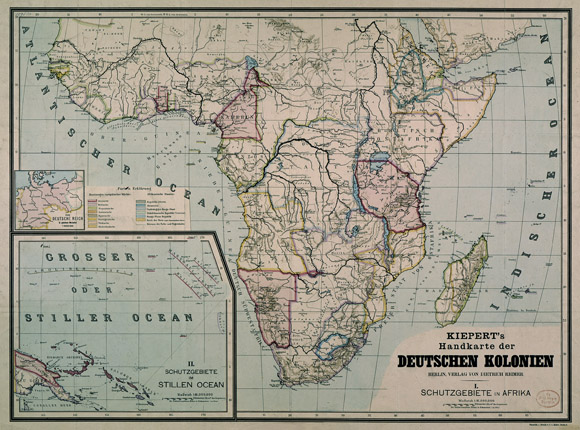













INTRODUCTION | DOCUMENTS | IMAGES | MAPS | EDITOR
|
Founded in 1871, the German Empire was a latecomer in the European race to claim overseas territories as colonies. Until 1884, German Chancellor Otto von Bismarck (1815-1898) had resisted all public calls for the acquisition of colonial possessions. But as colonial lobby groups like the Society for German Colonization (Gesellschaft für Deutsche Kolonisation, founded in 1884) and the German Colonial Society (Deutsche Kolonialgesellschaft, 1887) became more vocal about Germany’s need to participate in the “scramble for Africa,” Bismarck agreed to the creation of German “protectorates.” The first were established in Southwest Africa (Namibia), Cameroon, Togo, and Southeast Africa during the mid 1880s. Others were founded in the Pacific region in New Guinea, on the Marshall Islands, on a number of additional Pacific islands, and in the Chinese territory of Kiaochow around the port of Tsingtau during the late 1880s and the 1890s. Reference maps such as this one, which shows the state of German colonial expansion in Africa and the Far East around 1895, held particular appeal for the educated and propertied middle classes, the main supporters of colonial ventures. By contrast, the debates about colonies in the German Reichstag document that the representatives of the working classes largely opposed the domination of foreign peoples. Map by Richard Kiepert (1846-1915), cartographer, c. 1895.
© Bildarchiv Preußischer Kulturbesitz / SBB |
 print version
print version return to image list
return to image list previous image
previous image
